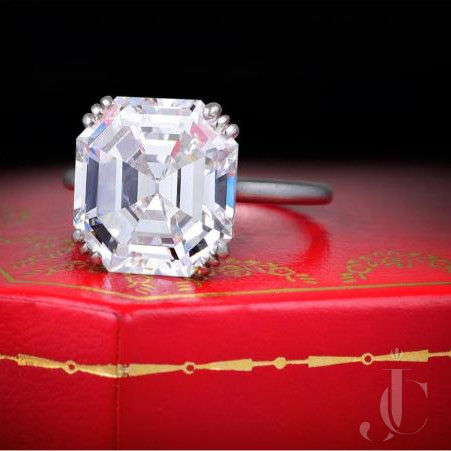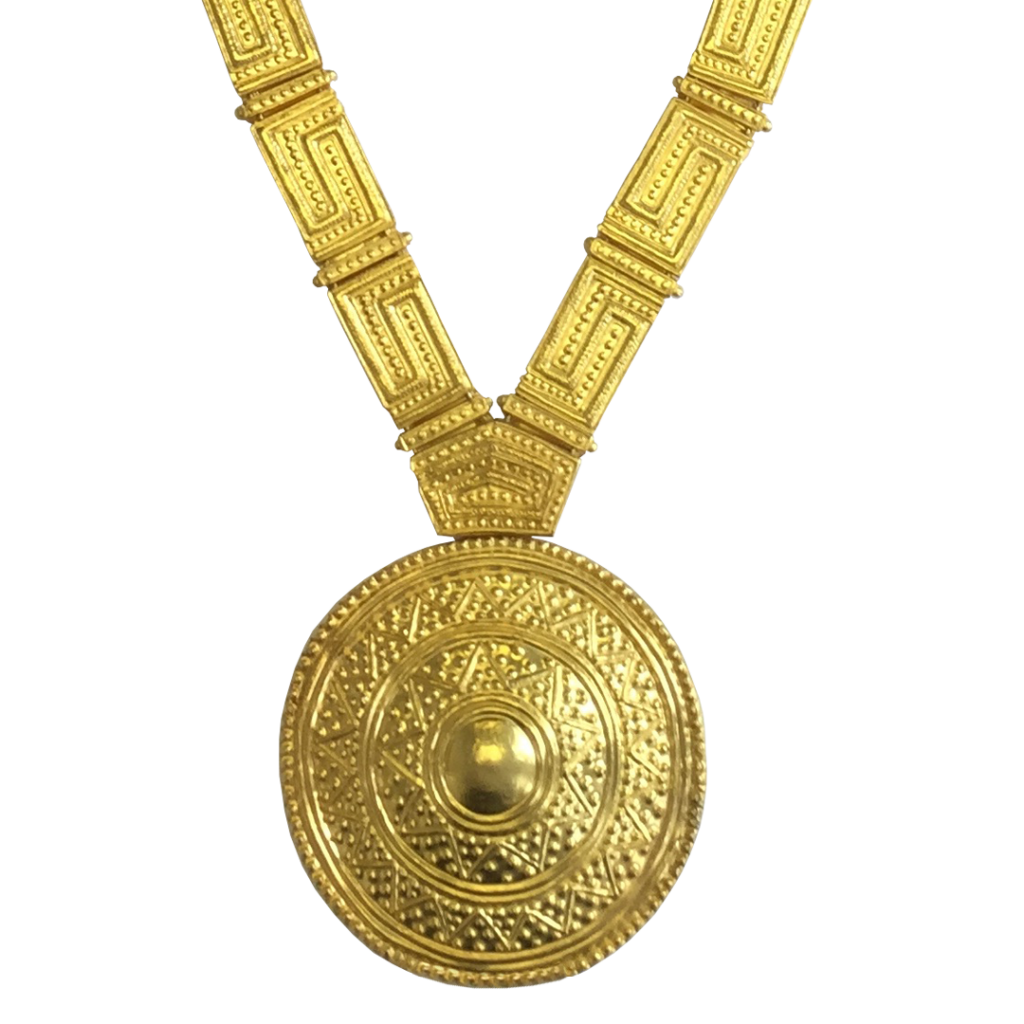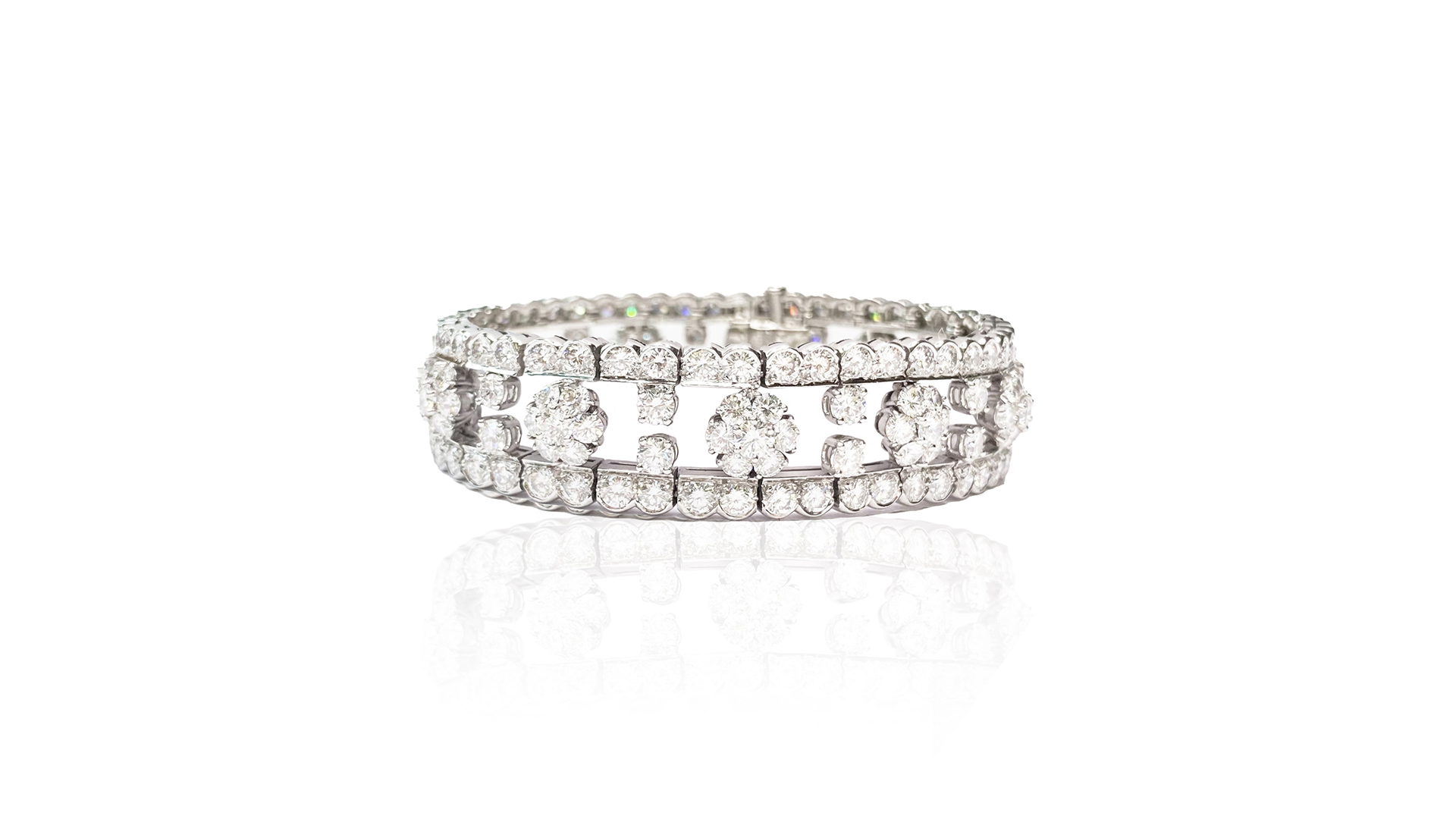Van Cleef & Arpels Diamond and Platinum Snowflake Bracelet, Photo Courtesy: J. & S.S. DeYoung
When it comes to rare and exquisite vintage jewelry, signed pieces can be among the most sought after and hard to come by jewels. Those highly coveted pieces of signed jewelry are very desirable to collectors as well as to people who want an assurance that they are getting top quality gems, impeccable fabrication and stellar design. The right signature on the right jewel can also add a premium to the price of the piece.
“Signatures can add tremendous value,” comments Miami-based Steven Neckman of the eponymous firm. “If it’s a recognized signature it shows the quality of a piece. When a jewel is signed Tiffany & Co., Cartier, or Van Cleef & Arpels, you know it is well made and that they use quality stones. Generally, with signed jewelry it’s a given that the quality is excellent with strong design.”
New York-based dealer, Richard Buonomo, principle of the firm bearing his name, agrees that a signed piece of jewelry carries a guarantee of quality, prestige and value, but he notes that there are some caveats to a signature’s worth. “A piece is more rare if it is signed, it is scarcity that drives prices up,” says Buonomo. “Still a signature does not always mean much. Some pieces are so generic or have so little design that it doesn’t change the price much.”

Cartier Asscher Cut Diamond and Platinum Ring, Photo Courtesy: Richard Buonomo 
Lalaounis Gold Necklace, Photo Courtesy: Steven Neckman
The Status of a Signature
Beyond the precious metals, fabulous gemstones and intrinsic design value, people also want signatures to elevate their own status. “People have a desire to be associated with something that lifts them up in society and enhances their status. It’s a basic human instinct,” observes Janet Levy of J. & S.S. DeYoung, in New York City. “A piece of jewelry with a signature denotes both quality and status.”
But what if two pieces are comparable, essentially the same in terms of quality and styling, yet one is unsigned. How do you decide which piece to purchase? According to Neckman, a signed piece of jewelry is more marketable, but that can also vary depending upon how hot a name is in the current market, something which changes over time.
Certain signatures are always top of the list for those seeking signed pieces – Cartier, Van Cleef & Arpels, Tiffany & Co. and Harry Winston. But Levy has noticed that over the past ten or 15-years name recognition has increased for many other design firms and that has opened up the market significantly. “There is a much wider appreciation of special designers — Sterlé, Mellerio, Boivin. There were a lot of very refined French design houses and a circle of designers who were more art houses. That world has opened up a lot because people have found out about them online. Now people know names that they didn’t know 20-years ago.”
Vintage Versus Modern
According to Levy, the market for signed jewelry can be divided into two areas — modern and vintage. “If there is a quality signed vintage piece it will be more valuable because these pieces are no longer made and they are very collectable. There are more collectors now, so those pieces are harder to find and more valuable,” explains Levy. “With modern pieces the signature is tied to market demand or quality. The pieces are not as rare because they are in production. The value is influenced by how available and how much demand there is for a particular name.”
Neckman considers signed jewelry to be collectable art and notes that some artists are more valuable than others and cites Van Cleef & Arpels, Bulagri and Cartier as three current top sellers.
“It’s not just a signature that adds value,” concludes Buonomo. “Some pieces of jewelry are imbued with a certain character of design that is associated with that name. The jewelry will have all the characteristics of design, quality of materials and manufacturing. That’s when you have a perfect storm for everything to add value to the piece and that’s when you can charge more for the jewel.”
Authored by Amber Michelle
